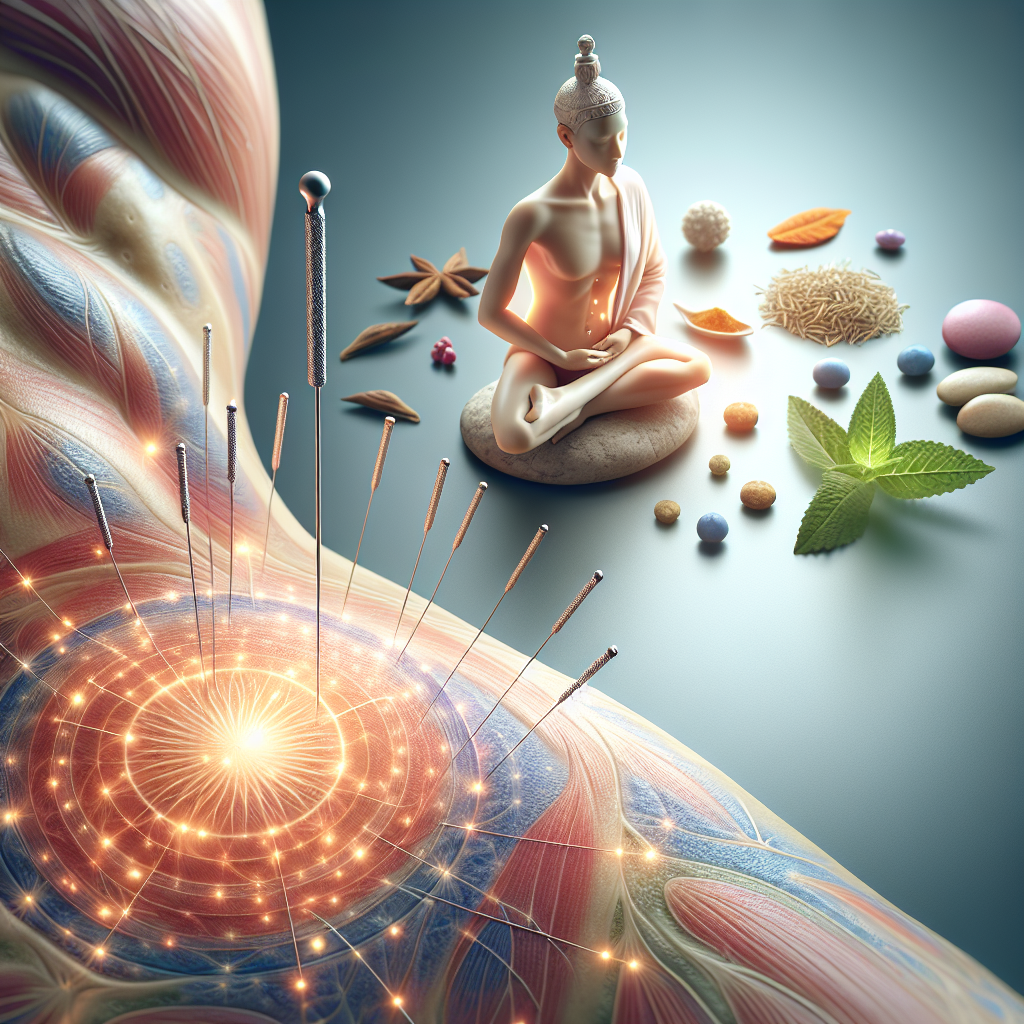Are you curious about the potential benefits of Complementary and Alternative Medicine (CAM)? In today’s fast-paced and often stressful world, many individuals are seeking alternative approaches to their health and well-being. CAM encompasses a multitude of practices, from acupuncture and herbal remedies to yoga and meditation. This article aims to shed light on the numerous advantages that CAM can offer, such as promoting relaxation, reducing pain, and enhancing overall wellness. Whether you are a skeptic or already a believer, exploring the realm of CAM might just be the key to unlocking a healthier and more balanced life.
Exploring the Benefits of Complementary and Alternative Medicine (CAM)
Complementary and Alternative Medicine, also known as CAM, encompasses a wide range of healthcare practices and therapies that are not traditionally considered part of conventional medicine. This article aims to provide an overview of CAM, its various types of therapies, the scientific evidence supporting its effectiveness, and its benefits in relation to conventional medical practices.
I. Definition and Overview of CAM
A. What is CAM?
CAM refers to a diverse set of healthcare approaches that are used alongside or instead of conventional medical treatments. These practices are based on principles and philosophies that may differ from those of Western medicine. CAM therapies may include methods such as acupuncture, herbal medicine, yoga, chiropractic, and various forms of meditation.
B. History and Evolution of CAM
The use of CAM therapies can be traced back thousands of years, originating in ancient civilizations where different cultures developed their own healing traditions. Over time, as cultures intertwined and knowledge spread, these practices evolved and were influenced by one another. Today, CAM continues to be shaped by ongoing research and advancements in medical understanding.
C. The Relationship between CAM and Conventional Medicine
Contrary to popular belief, CAM and conventional medicine are not mutually exclusive. In fact, they can often work together harmoniously to provide comprehensive healthcare. CAM therapies are frequently used alongside conventional treatments to enhance their effectiveness or to manage side effects. Additionally, many conventional medical professionals are open to integrating CAM therapies into their treatment plans, particularly when evidence supporting their efficacy is available.
II. Types of CAM Therapies
A. Mind-Body Interventions
Mind-body interventions focus on the connection between the mind, body, and spirit to promote health and healing. Practices such as meditation, mindfulness-based stress reduction, yoga, and tai chi fall into this category. These therapies aim to enhance self-awareness, reduce stress, and improve overall well-being.
B. Biologically Based Therapies
Biologically based therapies utilize natural substances like herbs, vitamins, and dietary supplements to promote health and manage illness. Herbal medicine, nutritional therapy, and the use of specific diets are common examples. These therapies can support the body’s natural healing processes and provide essential nutrients that may be lacking in a person’s regular diet.
C. Manipulative and Body-Based Methods
Manipulative and body-based methods are physical techniques used to manipulate the body’s structure and promote healing. Techniques like chiropractic, osteopathy, massage therapy, and acupuncture fall into this category. These therapies aim to alleviate pain, improve joint mobility, enhance circulation, and restore balance within the body.
D. Energy Therapies
Energy therapies are based on the notion that energy fields exist in and around the body and that disruptions in these fields can manifest as illness. Practices such as acupuncture, Reiki, and qigong fall into this category. By restoring the flow of energy, these therapies aim to promote healing, reduce pain, and alleviate emotional and physical imbalances.
E. Whole Medical Systems
Whole medical systems encompass complete healthcare systems with their own theories and practices. Examples include Traditional Chinese Medicine (TCM), Ayurveda, and homeopathy. These systems take a holistic approach, considering all aspects of a person’s health and well-being, and aim to restore balance and harmony to promote healing.


III. Scientific Evidence and Research on CAM
A. Challenges in Studying CAM
One of the primary challenges in studying CAM is the lack of standardized research methodologies across different practices. Each CAM therapy often has its unique techniques, making it difficult to conduct large-scale trials. Additionally, the placebo effect can play a significant role in CAM research, necessitating rigorous control groups and blinding methodologies.
B. Promising CAM Research and Findings
Despite the challenges, numerous studies have shown promising results supporting the effectiveness of certain CAM therapies. For example, acupuncture has been found to be effective in managing chronic pain, while mindfulness-based interventions have shown positive outcomes in reducing stress and improving mental health. Continued research is providing a growing body of evidence for the efficacy of many CAM practices in various health conditions.
C. Potential Risks and Safety Concerns
While many CAM therapies are generally considered safe, it’s important to be aware of potential risks and safety concerns. Herbal remedies, for instance, can interact with medications, and some treatments such as spinal manipulation may carry a risk of injury if performed incorrectly. It is crucial to consult with a qualified healthcare professional before undertaking any CAM therapy, particularly if you have pre-existing medical conditions or are taking medications.
IV. Benefits of CAM
A. Complementary Approach to Conventional Medicine
One of the major benefits of CAM is its complementary nature to conventional medicine. CAM therapies can fill gaps in conventional treatments, providing additional support and addressing aspects of health that may not be fully addressed by Western medicine alone. By integrating CAM and conventional medicine, patients can experience a more comprehensive and holistic approach to their healthcare.
B. Holistic and Patient-Centered Care
CAM places great emphasis on the holistic well-being of individuals, focusing not only on physical health but also on mental, emotional, and spiritual aspects. This patient-centered approach acknowledges the interconnectedness of various factors affecting health. It allows for personalized treatment plans, taking into account each person’s unique circumstances and preferences, resulting in a more individualized and empowering healthcare experience.
C. Personal Empowerment and Active Participation
CAM encourages individuals to take an active role in their healthcare journey. Many CAM therapies provide individuals with self-care tools and techniques that can be practiced at home. These practices empower individuals to take charge of their health, fostering a sense of control and self-efficacy.
D. Enhanced Well-being and Quality of Life
CAM therapies aim to promote overall well-being and improve the quality of life. By addressing the physical, mental, emotional, and spiritual aspects of health, individuals may experience reduced pain, improved stress management, enhanced sleep, increased energy, and a greater sense of balance and harmony within themselves.
E. Potential Cost Savings
Another significant benefit of CAM is the potential for cost savings. Many CAM therapies can be more affordable than conventional treatments, especially for chronic conditions. By incorporating CAM into their healthcare routine, individuals may reduce reliance on expensive medications and procedures, leading to potential long-term cost savings.


V. CAM in the Treatment of Specific Conditions
A. Chronic Pain Management
Chronic pain affects millions of people worldwide, and CAM therapies have shown promise in managing pain and reducing reliance on pain medications. Techniques like acupuncture, massage therapy, and mindfulness-based stress reduction have been demonstrated to provide relief for various types of chronic pain.
B. Mental Health and Stress
The prevalence of mental health conditions continues to rise, and CAM therapies offer alternative approaches to support mental well-being and reduce stress. Practices like meditation, yoga, and art therapy have been found to be effective in reducing symptoms of anxiety, depression, and stress-related disorders.
C. Cancer Care and Supportive Therapies
CAM therapies play a significant role in cancer care, focusing not only on the physical aspects of treatment but also on the emotional and psychological well-being of patients. Therapies such as acupuncture, mindfulness-based interventions, and music therapy can alleviate treatment side effects, improve overall quality of life, and provide emotional support during the cancer journey.
D. Women’s Health
CAM offers women various natural and holistic approaches to managing their health concerns. From the management of menstrual disorders and menopause symptoms to fertility support and pregnancy care, therapies like herbal medicine, acupuncture, and yoga can provide safe and effective options for women seeking alternative treatments.
E. Chronic Illnesses and Autoimmune Disorders
Individuals with chronic illnesses and autoimmune disorders often face complex healthcare needs. CAM therapies, such as dietary modifications, nutritional supplements, and mind-body interventions, can help manage symptoms, reduce inflammation, and support overall well-being in these conditions.
VI. CAM Integration into Mainstream Healthcare
A. Inclusion in Treatment Guidelines
As scientific evidence supporting CAM therapies continues to grow, there has been an increasing recognition of their potential benefits by mainstream healthcare organizations. Some national and international guidelines now include recommendations for certain CAM therapies, suggesting their integration into conventional treatment plans.
B. Collaborative Care Approaches
To provide patients with the best possible care, collaborative approaches between CAM practitioners and conventional healthcare professionals are becoming more common. By working together, practitioners from both disciplines can share knowledge, exchange perspectives, and create comprehensive treatment plans tailored to each patient’s needs.
C. Education and Training for Healthcare Professionals
Recognizing the growing demand for CAM therapies, more educational programs for healthcare professionals are introducing CAM coursework into their curricula. This ensures that healthcare providers have a solid understanding of CAM principles, practices, and safety considerations. By integrating CAM education into mainstream medical training, healthcare professionals can work alongside CAM practitioners more effectively, promoting an integrative and patient-centered approach to care.
VII. Global Perspective on CAM
A. Prevalence of CAM Use Worldwide
The utilization of CAM varies across different countries, cultures, and regions. While some CAM therapies are deeply rooted in certain cultures, others have gained popularity worldwide. The prevalence of CAM use can be influenced by factors such as traditional healing practices, cultural beliefs, accessibility to conventional healthcare, and individual preferences.
B. Cultural and Regional Practices
Traditional healing practices are often deeply ingrained in specific cultures and regions. Practices like Traditional Chinese Medicine, Ayurveda, and Indigenous healing systems have been passed down through generations and continue to play integral roles in the healthcare of their respective communities. These practices emphasize the use of natural remedies, holistic approaches, and personalized care based on individual needs.
C. Government Policies and Regulation
The regulation of CAM practices and therapies varies significantly from country to country. While some governments have established regulatory bodies to oversee the safety and quality of CAM practices, others have more lenient or limited regulations. The integration of CAM into conventional healthcare systems often involves establishing clear guidelines, standards, and safety protocols to protect the public and ensure quality care.
VIII. CAM and Personalized Medicine
A. Bridging CAM with Genomics and Precision Medicine
As personalized medicine and genomics gain traction in healthcare, there is a growing recognition that CAM therapies can be tailored to an individual’s unique genetic makeup, lifestyle, and preferences. The integration of CAM practices with genomic medicine holds the potential for developing personalized treatment plans that take into account an individual’s specific needs, genetic predispositions, and potential interactions between CAM therapies and medications.
B. Exploring Tailored Therapies and Individualized Approaches
CAM therapies inherently lend themselves to individualized approaches due to their patient-centered philosophies. By utilizing tools like personalized nutrition, genetic testing, and lifestyle assessments, CAM practitioners can develop tailored treatment plans that address the specific needs and preferences of each individual.
X. Conclusion
Complementary and Alternative Medicine (CAM) offers a diverse range of healthcare practices and therapies that can provide numerous benefits to individuals seeking holistic and personalized care. From its historical origins to its integration into mainstream healthcare, CAM continues to gain recognition for its role in addressing various health conditions and improving overall well-being. As the scientific evidence supporting CAM grows and collaborative approaches between CAM and conventional medicine expand, individuals have the opportunity to embrace a more comprehensive and integrated approach to their healthcare journey. Whether seeking relief from chronic pain, managing mental health concerns, supporting cancer care, or simply striving for enhanced well-being, exploring the benefits of CAM can offer new avenues for achieving optimal health and wellness.



